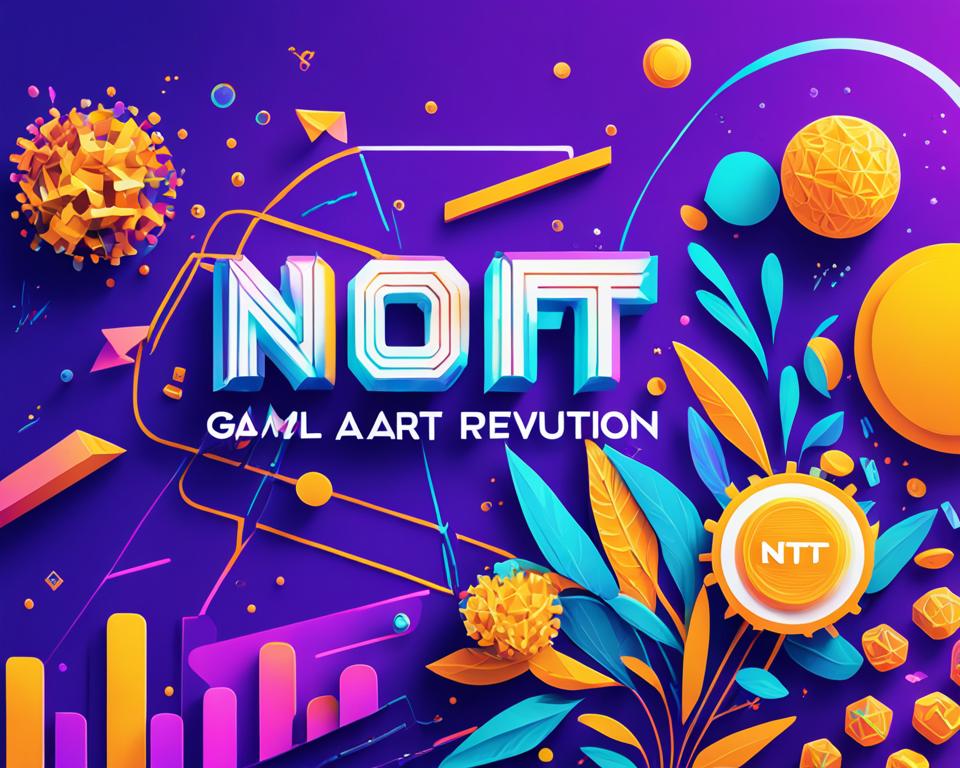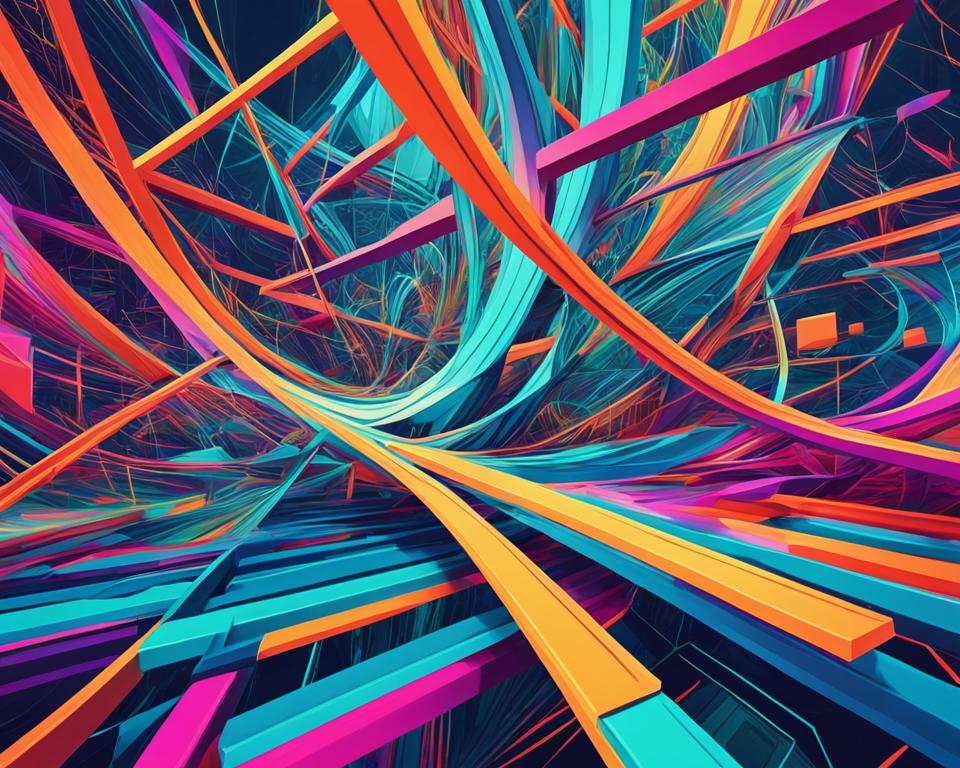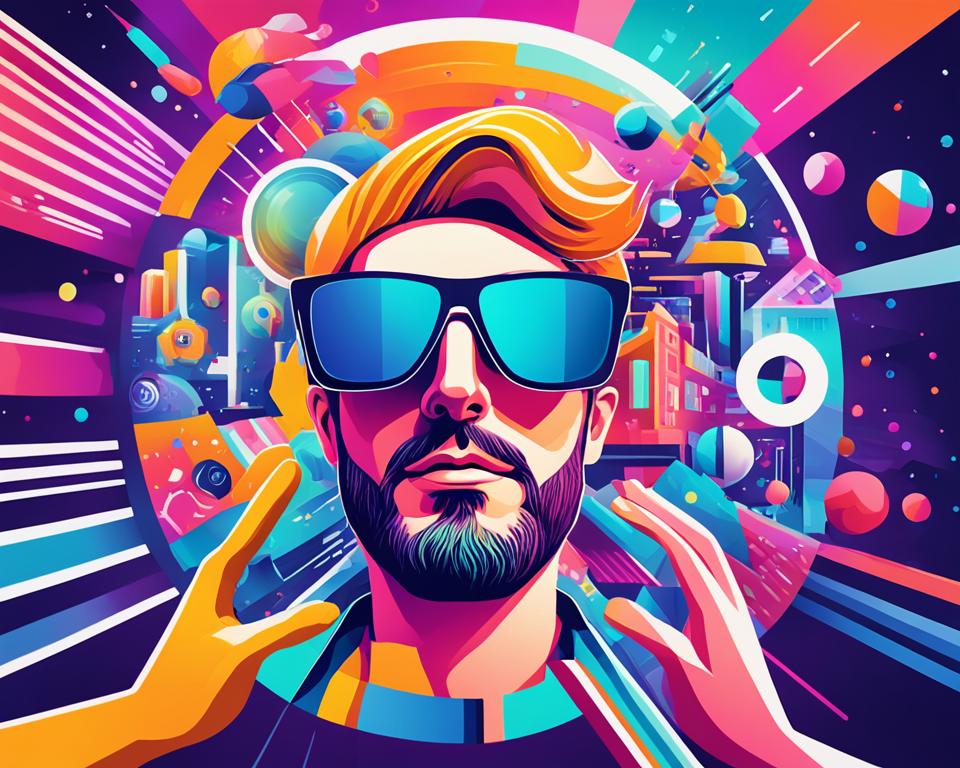Blog2Blog

Discover NFT (non-fungible token): Digital Art Revolution
There has been a new trend of innovation in the art world because of non-fungible tokens (NFTs). Through this innovative technology, it is possible to own and view digital art differently through the use of these digital tokens which are built on a blockchain.
NFTs are important tools that ensure secure intervention between artists, collectors and fans of digital art. Each work of art’s authenticity and scarcity are ensured thereby changing our perception and evaluation of them digitally.

Unveiling the World of NFTs
The use of NFTs is changing digital art and collectibles in enormous ways since they are not only different from normal tokens but serve a vital purpose. They indicate that it may have taken years for any creator’s work to attain any form of consumerism yet with this new technology; such opportunities are being created immediately.
What are NFTs?
NFTs are a kind of belongings that only exist as digital documents; they include unique designs created specifically for the internet, lands in virtual worlds or game-related items. Just like any other tokens on a blockchain, they cannot be swapped between them at will. Thus an NFT functions as an exclusive brand and thus also serves as a proof of authenticity for its category.
The Blockchain Connection
NFTs are inextricably linked to blockchain technology. The ownership of each NFT is recorded in a unique way and protected from counterfeiting. Because they are distinct digital tokens, there is no way that they can be confused with other items. Therefore, these blockchains will enable tracing every single item back to its manufacturer as well as its original. In the future, the worth and exchange of digital items will be changed by NFTs. Artists, collectors and investors will have as new opportunities opened by them. This further step into this era of digitalization means that NFTs would revolutionize arts in addition to virtual economies, and will also induce drastic changes in collectibles businesses.

Digital Art Renaissance
Digital art has been some wear on a digital area and now NFTs, or non-fungible tokens have just made it interesting. Them let the artists as well as the collectors swap our beliefs about owning online pieces of art in general. Digital artists’ views and worths have drastically changed with these unique tokens. Moreover, they also enable new forms of self-expression for the artists while allowing the collectors to possess artworks in their own ways.
Revolutionizing Art Ownership
The art world is a drastically altered place due to NFTs. They provide for the first time a safe means of confirming ownership of digital art. In contrast to traditional digital files which can be replicated, NFTs ascertain that every single piece of digital artwork is exclusive. This novel method of possessing artworks allows artists to derive income from their creations while collectors can acquire art that has genuine worth.
- NFTs let artists keep control of their digital art and get paid fairly for it.
- Collectors can buy digital art knowing it's real and rare, just like physical art.
- NFTs give artists and collectors power, cutting out the need for middlemen and galleries.

NFT (non-fungible token) Collectibles
The introduction of NFTs has changed our perspective on digital collectibles creating an entirely new realm for the ownership of virtual items. These are unique, exceptional items which use blockchain technology least of all but among many others. They are revolutionizing how we perceive and appreciate digital art, artworks and encounters.
The agency for this change is NFT collectibles. These allow collectors to have and exchange rare digital objects verified by third parties. From digital paintings and sculptures to virtual trading cards as well as game extras, everything can be found in these collections of NFT trading cards. A new definition of value is being established through these NFTs.
The most vivid experiences are created when packaged in one format with the metaverse through NFT collectibles. These celebrities seem like they belong to immersive digital universes full of wonder; here users can flaunt their best-loved cyber assets or engage with them at all times. Crossbreeding NFTs and the metaverse creates radical novel modes of owning or expressing one’s personality in cyberspace.
- NFT collectibles are unique, one-of-a-kind digital items that are verified and secured on the blockchain.
- These virtual collectibles can take many forms, including digital art, virtual trading cards, in-game items, and more.
- The integration of NFT collectibles with the metaverse allows for the seamless display, interaction, and trading of these virtual assets in immersive digital environments.
The Metaverse and Virtual Assets
Fast changes in the digital world have given rise to the metaverse that combines reality with fantasy. This has led to a paradigm shift regarding our perception of digital ownership and virtual assets by non-fungible tokens at their essence.
Exploring the Metaverse
The metaverse is where people gather, create things and face exploration. It’s a grand ground for NFTs to thrive. Here, users can purchase, possess, as well as trade one-of-a-kind digital belongings. Virtual houses, collectibles, game equipment or artwork created using computer graphics fall into this category. The importance of non-fungible tokens in the metaverse lies in their capacity to provide real decentralized ownership. To explain, internet users have total command over their online assets which is a significant departure from traditional methods of handling them.
| Key Features of NFTs in the Metaverse | Benefits |
|---|---|
| Unique digital ownership | Users can claim and showcase true ownership of virtual assets |
| Scarcity and rarity | NFTs can create a sense of exclusivity and value for digital items |
| Interoperability | NFTs can be seamlessly integrated across different metaverse platforms |
| Verifiable provenance | The blockchain records the history and authenticity of NFTs |
Decentralized Ownership and Scarcity
NFTs have made the new age of digital ownership and rarity a reality. By using blockchain technology, NFTs can be used to show whether or not these items are original and who owns them; thus revolutionizing the entire virtual universe permanently.
Decentralization comes with NFTs as well. In contrast to the previous era when large platforms controlled everything that was concerning the internet, now individual persons can possess everything that relates to themselves online? Artists, creators or collectors manage their own rewards and do not have to give away to intermediaries.
The most important aspect of any value in real life is limitedness; that is what NFT does for online property. Each one of these assets has specific characteristics that differentiate them from all others such as rarity attached on persons’ identity together with locality around which it was made leading to establishment of their price. Therefore many people will engage themselves into trading hot sales including investment through them.
| Attribute | Traditional Digital Content | NFT-Powered Digital Assets |
|---|---|---|
| Ownership | Centralized control by platforms | Decentralized, user-owned |
| Scarcity | Unlimited, easily replicable | Limited, unique, and verifiable |
| Value | Dependent on platform's policies | Determined by market demand and rarity |
Smart Contracts and Secure Transactions
In the universe of NFTs (non-fungible tokens), key component is smart contracts. They secure and ensure transparency of transactions.This has changed the digital art scene for the better.
Investing in Digital Art and NFTs
The advent of NFTs has opened up fresh avenues for investment for digital creatives. Such a type of asset is rapidly evolving. It is vital to understand the risk and reward associated with NFT investments.
Potential Risks
Investing in digital art and NFTs comes with risks. The market is highly speculative, leading to unpredictable price changes. Also, the lack of rules and fraud risks in the NFT world can be a problem for investors.
- Price volatility: NFT prices can change a lot, with sudden jumps or drops.
- Regulatory uncertainty: The laws and rules around NFTs are still changing, which can be risky for investors.
- Fraud and scams: The NFT market's decentralized nature makes it open to fraud, like wash trading and rug pulls.
Potential Rewards
Smart investors have invested in digital art and NFTs for many reasons. One of them is that such investments may seem risky. Digital collectibles are becoming popular because they hold the possibility of increasing value easily. Although it is complicated, investing in this market offers good opportunities.
- Diversification: NFTs add a unique asset class to an investment portfolio.
- Digital ownership: NFTs let investors own and trade digital assets, offering a new kind of investment.
- Potential for appreciation: As the NFT market grows, successful digital art and collectibles could greatly increase in value.
Investing in digital art and NFTs requires thorough diligence, managing risks and comprehending the marketplace. By taking into account both the hazards and profits, investors can come up with wise decisions. The art world and the finance sector have an exciting prospect with this move.
NFT Marketplaces and Platforms
The world of Non-fungible Tokens (NFTs) is rapidly evolving. Niches and platforms for buying, selling, and trading digital assets have gained great importance. These comprise of virtual artworks and collectibles thereby ensuring that fans, artists and investors in general have a secure environment to function within the vast digital art scene. Not offering much in terms of selection, but fulfilling different needs are major NFT marketplaces including OpenSea, Rarible, SuperRare and Nifty Gateway. Users can explore, buy or own a variety of NFT avatars from these platforms. Many showcase some of the best works from gifted digital artists and other creators as well. Other sites like NBA Top Shot which focuses specifically on sports NFTs; Decentraland for virtual land; Axie Infinity is all about NFT gaming. Their vibrant inter-communities build up within their own larger ecosystem while fueling the overall growth of the NFT industry. The NFT market is flourishing and these niches are the main components that will shape its future. They ensure safety of transactions, give proof of purchase and ownership as well as assist creators and collectors! So there are those very platforms that drive our understanding concerning this brand new currency in the digital economy based on unique tokens instead because they cannot be exchanged for anything else.
"The NFT marketplaces have changed how we see and interact with digital art and virtual assets. They make owning art more accessible and help creators find new ways to express themselves and make money."
The Future of Digital Art and NFTs
The NFT (non-fungible token) industry is growing fast, changing the future of digital art. Blockchain technology, the metaverse, and more people using NFTs will open up new chances for artists, collectors, and investors.
Emerging Trends and Opportunities
One of the most exciting trends is the merger of NFTs with the metaverse. Well, it is a place for people to meet, create, and trade things in a virtual world. Therefore, NFT digital art and virtual items will serve as important elements in enhancing adherence and enjoyment towards this form of existence as metaverse grows more and more realistic over time. Also generative art is now another big thing that people are talking about today; it’s computer-generated unique artwork that can only be made by algorithms. Because it’s different every time you navigate through the technology used to produce such pieces, it has become quite appealing to both artists and collectors.
- Increased Adoption of NFTs in the Mainstream
- Integration of NFTs with the Metaverse
- Emergence of Generative Art
- Advancements in Blockchain Technology
- Expansion of NFT Marketplaces and Platforms
As blockchain technology gets better, NFTs could change how we make, own, and trade digital things. The future of digital art and NFTs is full of chances for artists, collectors, and investors to dive into this new tech.
"The future of digital art and NFTs is full of possibilities. The mix of blockchain, the metaverse, and more people using NFTs opens up new ways to be creative and make money."
Legal and Regulatory Landscape
NFTs (non-fungible tokens) are gaining popularity which has resulted into complex legal frameworks for regulating them. However creators, collectors and investors must familiarize themselves with the many growing number of laws and regulations including the caveats. There is a serious debate on how old laws fit into the new characteristics of NFTs. Issues such as copyright, taxation, money laundering rules as well as consumer protection laws are very important. Therefore most nations worldwide are operationalizing new measures to protect safe growth for NFTs. In the United States some instances about NFTs being considered securities have caught the attention of SEC. This has led people to question about what NFTs are in law and what rules govern them. To keep abreast with the changes in laws and positions taken by organizations like SEC it is vital to update ourselves always.